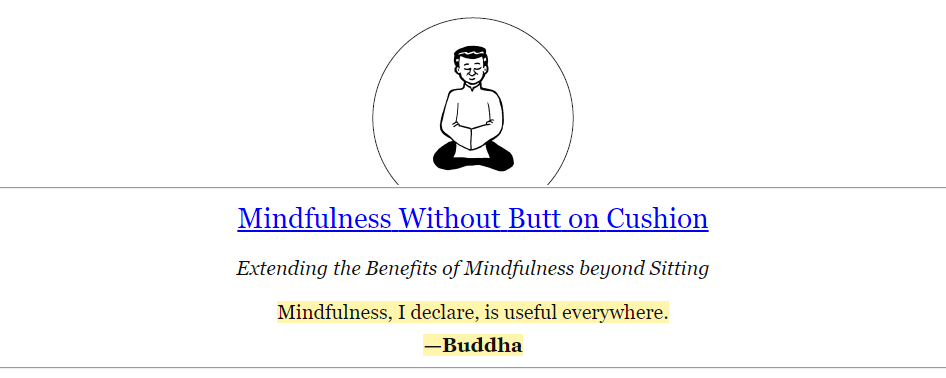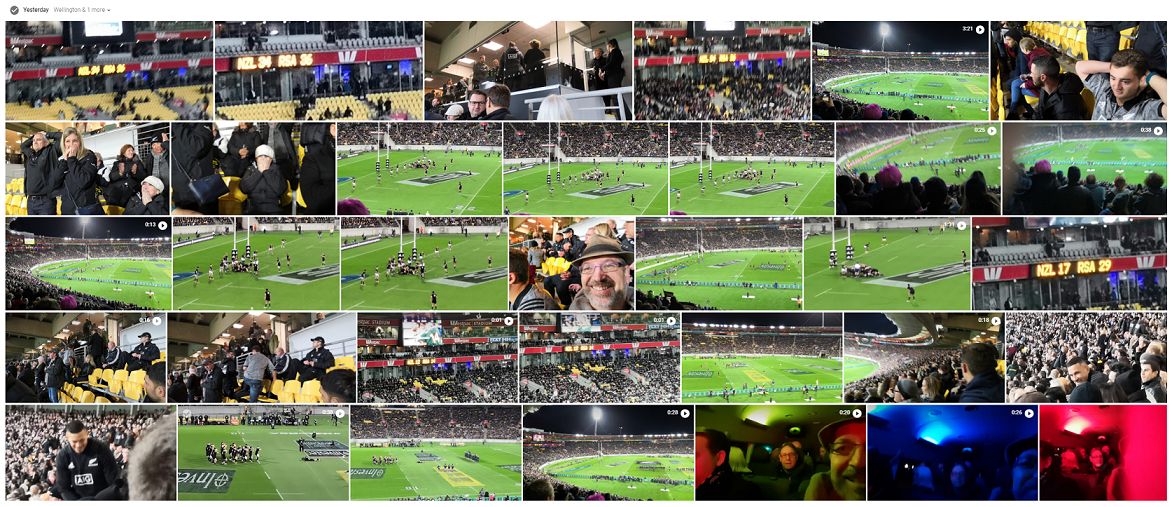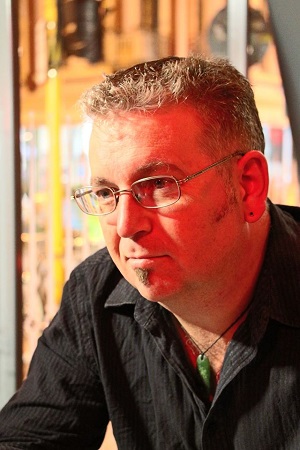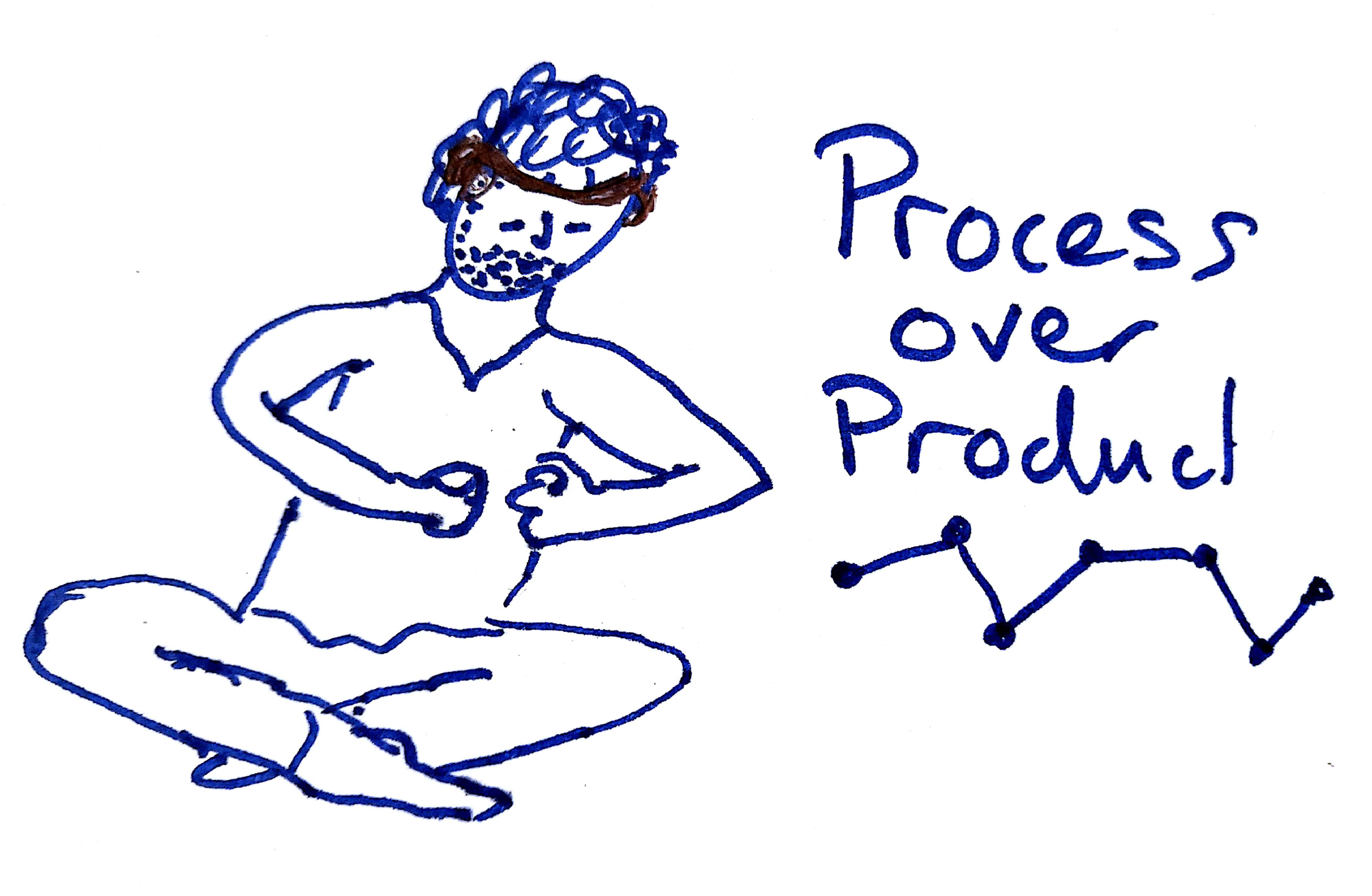
Daily mindfullness
and reading Search Inside Yourself
by: Peter Torr Smith
15th September, 2018
Tags/Categories
Outline of Chapter 3 of Search Inside Yourself, “Mindfulness without Butt on Cusion”
This chapter covered:
- Generalize mindfulness into our daily life
- Mindfulness in activity/action, such as when listening and talking, walking, working, eating and other experiences
- Directed mindfulness
- to others
- Mindful listening (formal, informal)
- Mindful Conversations
- Listening - giving others the space and gaps to speak, and not focus on what I’m going to say
- Looping - summarizing or confirming back to them what I heard them say
- Dipping - checking in on myself, being mindful of my body, feeling, reactions to what I’m hearing.
- Formal (Active exercise) vs Informal mindful conversations
- listen, loop, dip
- invite other to let me know what they hear (if appropriate)
- Focused and Open Attention
- Like aerobic and weight/resistance exercises that complement each other building stamina and strength, the author suggests both focused mindfulness and attention (meditation and the likes of walking mindfulness) should be complemented with open, curios, wandering, and “everything is ok, there are no distractions” mindfulness. This could be an intentional part or phase of a meditation or active attention (e.g. focus on the breath or a sound or an object and keep returning to that), or during times of open attention or mindfulness in activity where we allow our minds to wander and appreciate or observe, and not be in such a hurry to “let it go”, but just observe and non-judgemental (on others or ourselves).
- Gradual effort and Sudden Enlightenment
- Basically acknowledging that noticing and experiencing the changes we want in our life and our being do not happen overnight, and are the result of regular effort to make the change
- At first we may not see any benefits at all. But then one day, after our perseverance of practice, we see that change in ourselves. This may be in adopting any regular habit such as exercise, when we suddenly realise the 2KM swim I thought was not possible was all of a sudden done with ease. Or it could be with mindfulness and meditation, when we may not only find it easy, if not desirable, to take the time for some focused mindfulness (e.g. meditation), but also that mindfulness as become a natural part of many parts of our day.
What did you learn from your 'mindfulness conversation'? How did the other person find it?
I chose to do the “informal” mindful conversation with a few people yesterday as opposed to
sitting someone down for this exercise. I will do that at some point soon, but I’m keen to
close this sprint and get into Sprint 5 today.
I also practiced “Mindfulness in action” yesterday, both during walking, and during
watching the All Blacks play South Africa last night.
From my informal mindful listening and “conversations” yesterday (which were in a social
environment and with people I’d not met before), I enjoyed the fact that I was consciously
paying attention and listening and not getting caught up in what I was going to say next.
If I found myself thinking about that, I gently acknowledged it and let it go, and regained
my attention to what they were saying.
It felt quite liberating explicitly not worrying about what I would say, and allowing the
other person the space and time to speak, and to (semi-actively) be listened to.
I did not explicitly say “this is what I heard you say” back to them, but instead nodded
and made small gestures and “yes” type acknowledgements as they spoke, and once they had
clearly finished, I used what they had said to ask further questions about them and what
they had talked about. This way I found it was easy to show I heard them, and get any
clarifications from them of things I may have not heard properly just through my
questioning.
It’s probably not quite the mindful conversations as per the book, but it felt good and
appropriate for the situation.
Whilst walking to the event yesterday evening, I consciously practiced mindfulness in
action by focusing on my breathing as I walked, from letting my mind experience flow from
focusing on my breath to wandering off, and to also just appreciating the beauty around me
(the waterfront, the sky, the sound of the birds, the people walking by).
I also found myself intentionally “being present” at the rugby game, choosing to watch the
players and the game and the ball attentively and to appreciate the experience and the
crowd atmosphere. I ended up noticing a lot more actions and passes and mistakes and wow
moves of the various players than I think I would have normally done.
Which of the three suggested techniques will you use to sustain your practice?
The 3 suggested techniques in Search Inside Yourself, chapter 3, to sustain my mindfulness practice are:
- Have a buddy - like a gym buddy, to keep each other on track, especially for first few months as habits build
- do less than I can - aim to do only 5 mins meditation each day, when I know I can do 20. Everything beyond 5 mins is a bonus and a celebration
- Commit to taking one mindful breath a day - This is not much, and so is an easy commitment to fulfill (and feel great about) but the author proposes that simply the intention to be mindful is in itself a meditation.
I will add another to this list:
- Grab mindful anytime, anywhere, any experience, and let every second of that be ok and enough. I used to only do TM (Transcendental Meditation) for 20 mins only first thing in the morning, and never after eating. Now I’m allowing myself to grab 10 or 15 mins anytime of the day, and of course I’m consciously taking myself into a mindful state at times throughout the day in whatever I’m doing.
Any other musings?
I’m enjoying using the Muse mind sensing headband and app.
Not so much that I think the “sensing” element is overly accurate or scientific (it could
be, or it could just be a gimmick, or more likely a bit of both).
The main reason is that the first 10 sessions of the guided meditations (actually, just intro and end) have been introducing different aspects and approaches to meditation. And those suggestions, such as acknowledging when the mind has wandered, to let that be ok, and to be intentful in letting it go and returning to the breath, are in line with and complementary to the lessons being dicsussed in Search Inside Yourself.
I also have found that for me, if there are things I need to do but avoid them, if there’s a way to “gadget it up” to make it fun or enjoyable, then I’ll do that to help me get going. I did this with getting myself a Dyson cordless vacuum cleaner for my birthday a few years back, and now with the Muse headband and software, it is helping make this habit a lot easier :-)


